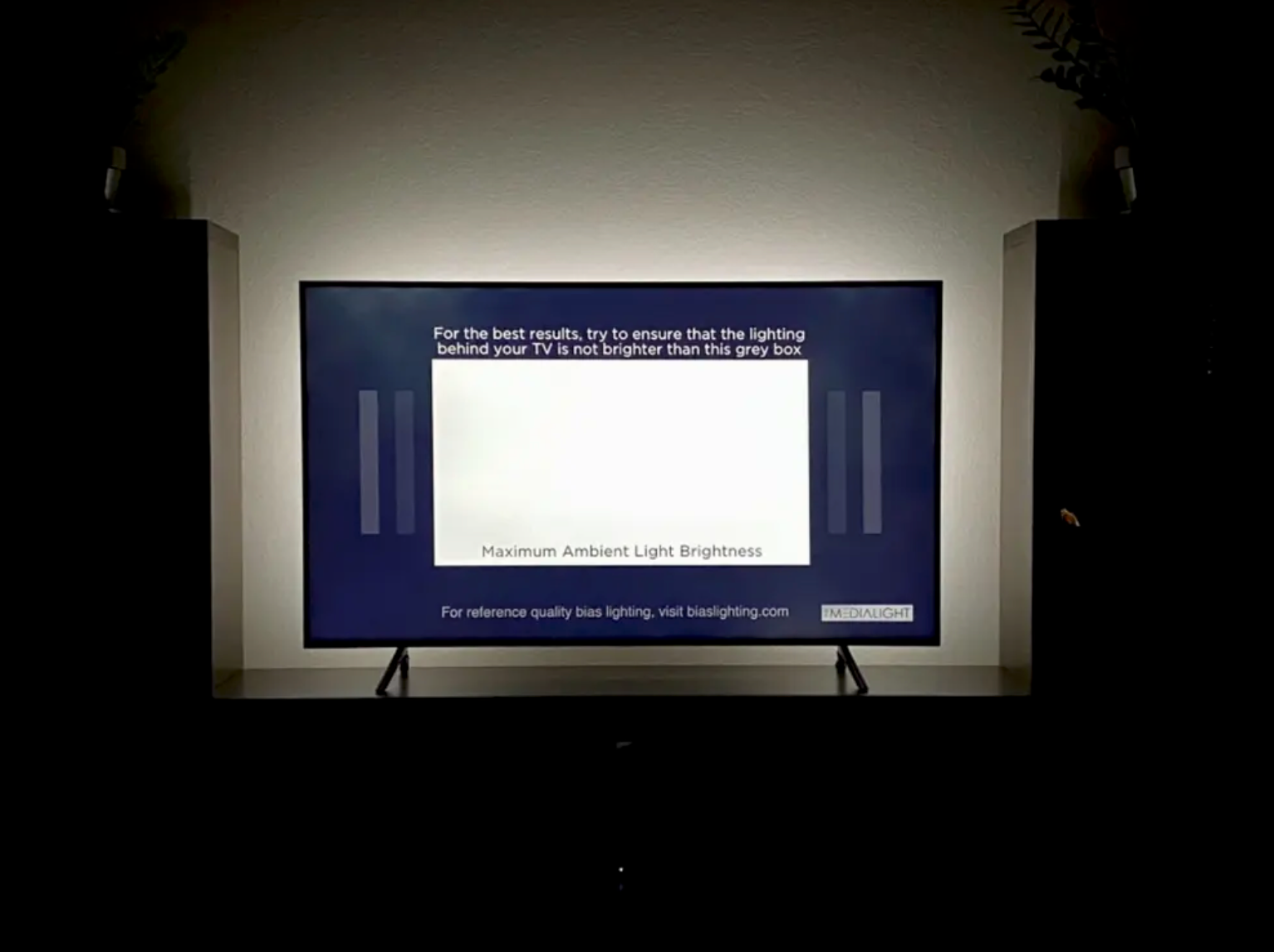Industry Standard Bias Lighting
Industry Standard Bias Lighting
MediaLight & LX1 Length Calculator
Please select the appropriate options below to determine the correct size bias lighting for your displays
What is the aspect ratio of the display?
What is the size of the display (This is the length of its diagonal measurement)
inches
Do you want to place the lights on 3 or 4 sides of the display (Read our recommendation on this page MediaLight & LX1 Length Calculator if you are having trouble deciding).
This is the actual length that is required:
You should round up to this size bias light (you can round down at your discretion if the actual and rounded measurements are very close. It is usually better to have more than too little):

Hi there! Whether you get MediaLight or LX1 bias lighting, you probably wonder how long of a strip you should get for your display.
You can use this calculator! It works for both MediaLight and LX1, and is based on our recommendation of placing the lights 2 inches from the edge on all sides.
If you are “in-between sizes,” (i.e. 3.11 meters), you can round down in most situations. (3.4 meters is not in-between sizes).
Generally speaking, for every .25 meters above the next lowest size, you’d want to place the lights approximately another inch from the edge. Our recommendations are based on placement 2 inches from the edge of the display.

Still not sure whether to place lights on 3 or 4 sides?
Generally speaking, you should put lights on only 3 sides when you have any of the following:
Obstructions - like a TV on a stand when there is nowhere for the light to pass below the TV. Another example is a sound bar or center channel speaker directly below the TV (directly means virtually touching all the way up to a few inches below).
Distractions - like a mess of wires or a bunch of stuff under the TV (set-top boxes, vases, framed photos, etc). Out of sight, out of mind!
Reflections - If the TV is on a glass tabletop or directly above (within 4-5 inches) a glossy soundbar or center channel speaker, it's probably going to cause glare. Better to omit lights.
4 sides are best when the TV is on a wall mount, but you can't really go wrong with 3 sides. If none of the above apply, you can probably put lights on 4 sides. In the worst case, detach the bottom.
Now, here’s some additional nitpicky information about why we don’t recommend the “display on a stand” column for some people:
The third column in the sizing chart above causes some confusion, and I'm on the fence about discontinuing the third column for the sake of simplicity, even though it's workable in many situations where a TV or monitor is on a stand versus a wall mount.
One place where the "display on a stand" installation works really well is on most smaller computer monitors up to 32", although I've used a 1 meter eclipse on a 55" Sony Bravia and was able to set reference levels against a light gray wall.
So, the Mk2 Eclipse 1 meter remains the recommendation for computer displays even though it is typically not long enough to go around 3 sides if it was placed at the edge. If you are wondering why, feel free to email me. There are a bunch of reasons and they might be a bit too detailed for this post.
However, as you can see, the MediaLight Mk2 Eclipse is usually not long enough to go around 3 sides and it looks great, with a soft and even surround. This works sith a small monitor up to 27" because the display is small enough that all of the lights collectively are never far from any of the edges.

If you are in-between sizes you might be able to use a slightly smaller strip. 3.11 is in-between 3 and 4. 3.33 is not. When in doubt, round up because you can always cut off any excess MediaLight or LX1.
**Sometimes TVs have a pronounced "hump" on the bottom. This is common with a lot of ultra-thin OLED displays to house the electronics and speakers. You can still run lights on the bottom unless the lights would be touching the wall. Ideally, you want about 1-2" away from the wall. The thicker bottom would not look as bright and the "halo" would be narrower at the bottom, but it doesn't look bad.
We have more information about installing lights over these humps on our installation page.
